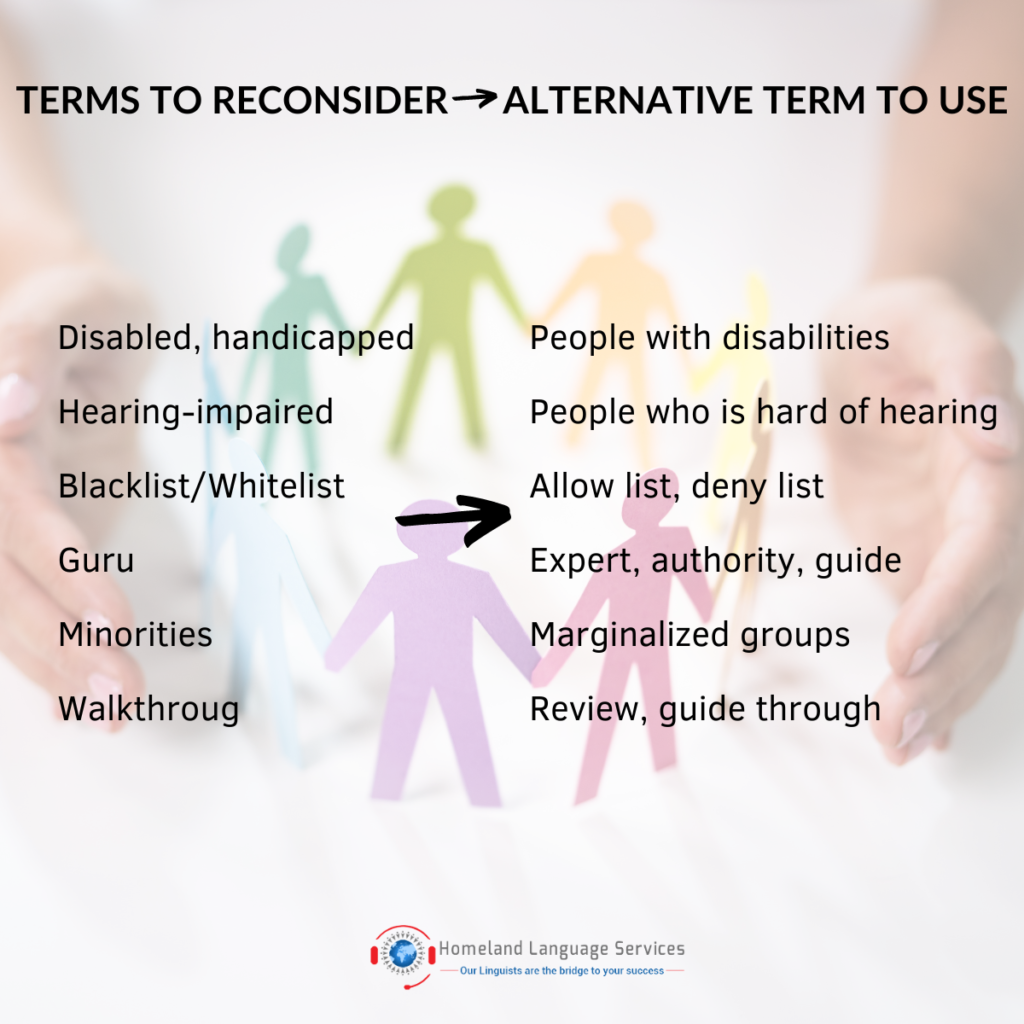Creating a workplace environment where every employee feels a sense of belonging and can authentically express themselves is crucial. One powerful tool to achieve this is the use of inclusive language, which helps eliminate exclusivity from conversations and fosters a more welcoming atmosphere.
In this article, we will delve into the concept of inclusive language, providing practical examples to help you cultivate an inclusive workplace culture and develop marketing materials that resonate with diverse audiences both now and in the future.
Understanding Inclusive Language:
Inclusive language refers to the choice of words and phrases that steer clear of biases, slang, and expressions that discriminate against individuals based on their race, gender, socioeconomic status, or ability. By adopting inclusive language, you can effectively communicate with a broader range of people, ensuring that everyone feels understood and valued.
Examples of Inclusive Language:
- 1. Avoid using company or team acronyms that may exclude or confuse individuals.
- 2. Opt for plain language in your writing, avoiding complex expressions or jargon that may alienate readers.
- 3. Use the pronoun ‘they’ instead of gender-specific pronouns like ‘he’ or ‘she’ when referring to a hypothetical person.
- 4. Ensure your company’s designs or visual content represent a diverse group of individuals, fostering a sense of inclusivity.
- 5. Exercise mindfulness when using terms related to race, ethnicity, nationality, or culture, ensuring they are used respectfully and accurately.
- 6. When discussing family matters with colleagues, employ gender-neutral labels for family members to promote inclusivity.
- 7. Show sensitivity to terminology related to medical conditions and disabilities. When unsure, respectfully ask individuals about their preferred pronouns, keeping in mind that some may choose not to identify with traditional pronouns.

Embracing inclusive language may seem challenging at first, but just as we adapt to advancements in technology, environmental concerns, and human rights, we can also cultivate the habit of using inclusive language. By consciously incorporating inclusive language practices into our everyday communication, we create a more inclusive and accepting society.
Remember, fostering an inclusive language environment is an ongoing journey, and small changes in our language choices can have a significant impact on promoting diversity, equity, and belonging in our organizations and beyond.
We are a trusted language solutions provider committed to breaking down language barriers and fostering effective communication across various industries. With a focus on inclusivity and quality, we offer comprehensive language services tailored to meet your diverse needs.

